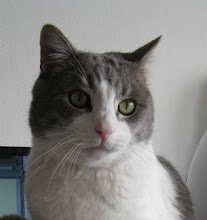Now we're seriously into the conference: the first full day of talks (without poster sessions, excursions etc.).
We kicked off with Douglas Schemske talking about evolution in the tropics. It's well known that the amount of diversity in the tropics is huge compared to the more temperate parts of the world. People have surveyed forest plots a few hectares large, and found a huge number of tree species - more than in the whole of North America. This has puzzled people, and there are several theories being kicked round. Schemske was arguing that the diversity is driven by biotic interactions - i.e. predators eating prey, plants living in a mutualistic interaction with ants, pathogens living off hosts etc. His claim is that in colder regions, the main threats come from abiotic conditions (cold, frost, drought etc.), so species invest in reactions to those.
In the tropics, the environment isn't from inclement weather, but from other species, so a species has to adapt to overcome its predators, pathogens etc. This leads to an arms race - the predators and pathogens are also evolving as well. This sort of interaction is called the Red Queen hypothesis, from Alice Through the Looking Glass, where the Red Queen saysNow, here, you see, it takes all the running you can do, to keep in the same place.
Species have to keep evolving to keep half a step ahead of their competitors. In different parts of a species' range, the populations will be assailed by slightly different competitors, so will evolve in different ways (mimicry rings are a great example, wander around Jim Mallet's pages for a bit and you'll see why). This can then lead to speciation.
This sounds all well and good - more biodiversity leads to more biodiversity, but how does it get started? Schemske didn't address this problem. He did mention an alternative hypothesis to his, which is that the World has been tropical for most of the time there has been life, so the tropics may just be older, and hence had more time to produce more biodiversity, which has then exploded.
After the plenary, I spent most of my day listening to talks about mapping genes. A lot of them were "I got some DNA from a cross/several crosses, made a linkage map, compared it to once from a model species, and then mapped some genes". The quality of the maps improved over the day, and people found genes (a couple I wasn't convinced about, but hopefully they'll check further). One interesting point came from Hopi Hoekstra. She has been looking at genes for coat colour in a mouse, and found a locus affecting variation in the trait, and then found out that it wasn't in the protein sequence, it was in the regulatory region (i.e. the part of the genome that controls when a gene is switched on and off). I liked this, as I've been wondering if regulatory sequences will appear in these sorts of analyses.
The non-mapping talk I went to was by Leonard Nunney. He has been working on Haldane's dilemma, which sets a limit on the rate at which a population can evolve in a worstening population. He put this into the context of the Red Queen, because her full reply to Alice is:Now, here, you see, it takes all the running you can do, to keep in the same place. If you want to get somewhere else, you must run at least twice as fast as that!
So, not only does one have to run as fast as you can to stay in the same place, but if the environment is changing, you have to run even quicker. Actually, this was the point of the original Red Queen paper (by Van Valen): that extinctions occur at roughly a constant rate, which suggests that species aren't adapting any better to the environment, presumably because the environment keeps on changing.
The evening presentation was by Steve Stearns (now of Yale) on how the ESEB was set up. Basically, a publisher wanted him to start a journal, but wanted a society behind it. So, he had to set up a society too...
Thursday, 23 August 2007
ESB Wednesday: "my Red Queen's map's better than yours"
Posted by
Bob O'Hara
at
15:42
![]()
Labels: conference, ESEB, evolution
Subscribe to:
Post Comments (Atom)

2 comments:
Grateful for sharing thiis
Appreciate yourr blog post
Post a Comment